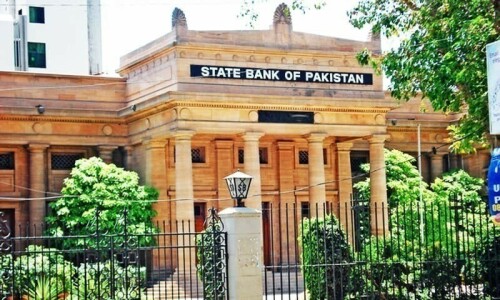KARACHI: The State Bank of Pakistan’s (SBP) foreign exchange reserves reached a two-year high, crossing the $9 billion mark after inflows from the International Monetary Fund (IMF).
The central bank released the latest data about the foreign exchange reserves on Thursday, showing that the reserves went up to $9.120bn at the end of the week on May 3.
“During the week, the SBP reserves increased by $1.114bn to $9.120bn mainly due to receipt of $1.1bn from the IMF as the final tranche under the Stand-By Arrangement (SBA),” said a statement issued by the bank. The country’s overall forex reserves reached $14.458 billion including $5.338bn held by commercial banks.
The SBP’s reserves were $9bn in mid-July 2022, and since then, they have never found support to stop falling. At the end of FY23, the country was close to sovereign default as the foreign exchange reserves of the State Bank fell to $4.4bn in June 2023.
Remittances rise 28pc in April
While the country negotiated a nine-month $3bn SBA with the IMF at the end of June 2023, the SBP restricted imports on a large scale and the repatriation of profit on foreign investments to tighten the dollar outflow.
However, the approval of the SBA opened doors for inflows from other sources, too. While Saudi Arabia and UAE kept billions of dollars in the State Bank’s account, China rolled over a number of payments that were due in CY2023.
During political and economic uncertainty, the rupee came under severe pressure plunging to Rs306 against the US dollar in the interbank market while the open market traded as high as Rs340. A crackdown was launched to stop dollar smuggling, and the exchange rate stabilised.
The exchange rate has been stable between Rs278 and Rs280 for the last four months, with minor fluctuations.
Remittances soar
Remittances sent by overseas Pakistanis increased 28 per cent in April, reported the State Bank of Pakistan on Thursday.
The country received $2.81 billion in April, 27.9pc higher than the inflow in April FY23. The country received $23.85 during the first 10 months of FY24, 3.5pc higher than last year.
The highest inflow of $5.8bn was from Saudi Arabia in July-April 2023-24. This marks a growth of 5.5pc over the same period last year.
The 10-month remittances almost equal the foreign debt servicing required for FY24.
The current account deficit in nine months is about half a billion dollars. The CAD could be zero at the end of this fiscal year. In this situation, the remittances are very important. They will help the government borrow less for foreign debt servicing in the next fiscal year, provided the CAD is kept under control.
Published in Dawn, May 10th, 2024













































Dear visitor, the comments section is undergoing an overhaul and will return soon.